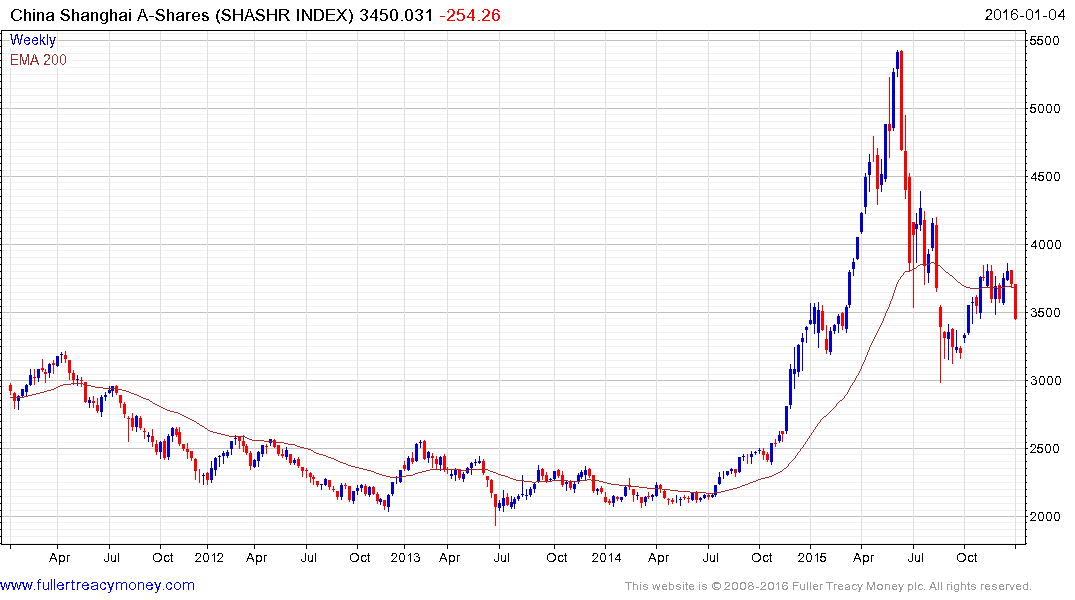China's Seven-Minute Selling Frenzy Shows Circuit-Breaker Risks
This article by Kyoungwha Kim and Cindy Wang for Bloomberg may be of interest to subscribers. Here is a section:
“Investors rushed to the door during the level-one stage of the circuit breaker as they fretted the market would go down further,” said William Wong, the head of sales trading at Shenwan Hongyuan in Hong Kong.
?Spiraling losses on the first day of China’s circuit breakers show how measures meant to help restore calm to one of the world’s most volatile equity markets risk doing just the opposite. The selloff could spur policy makers to “fine tune” the new rules, according to Andrew Sullivan, managing director for sales trading at Haitong International Securities Group Ltd. in Hong Kong. Unlike similar circuit breakers in markets including the U.S., the threshold for trading halts in China is low enough that they would have kicked in 20 times last summer alone.
Circuit breakers are the latest effort by Chinese authorities to tame swings in a stock market where the growing use of leverage by individual investors drove an unprecedented boom -- followed by a $5 trillion bust -- in the span of just a few months last year. The CSI 300 index of the nation’s biggest companies rose or fell by 5 percent 20 times from the start of June through early September, with daily moves exceeding 7 percent on half of those occasions.
Chinese shares began Monday with losses after data showed manufacturing contracted for a fifth straight month and investors anticipated the end of a ban on share sales by major stakeholders at the end of this week.
In the West we are accustomed to monetary policy decisions and economic statistics having an influence on the market and investor psychology. These also play a role in how Chinese investors make decisions but the fluidity of the regulatory framework and the government’s direct involvement in equity market have an even greater influence.
The opening up of the options market in mainland Chinese shares early last year proved to be a major catalyst for risk appetite and allowed millions of day traders’ access to leverage for the first time. Many of these same individuals experienced margin calls for the first when prices stopped rising. The rush to exit positions saw the market fall even faster than it had risen. The government’s response was to ban shorting, ban executives from selling and order banks and sovereign wealth funds to buy among other initiatives.
With the ban on shorting due to expire this week, the introduction of circuit breakers was probably envisaged as a way to avoid the kind of volatility that plagued the market in the summer. It has proved to be another example of how the government has been ham-fisted when attempting to dictate how the market should react on an intraday basis. As a result there will inevitably be some massaging of how the system is structured and the government has a number of additional measures at its disposal.

The Shanghai A-Share Index accelerated higher, then accelerated lower to find support near 3000. It held a progression of higher reaction lows as it unwound the deep oversold condition relative to the 200-day MA, in a steady uptrend engineered by policy makers, before encountering resistance in the region of the 200-day MA. Today’s pullback breaks that sequence and suggests the process of support building, evident since July, is likely to be deeper and more volatile than seen in the last few months. A clear upward dynamic will be required to signal demand returning to dominance while the most likely scenario is for ranging above 3000 as base formation development takes place.


